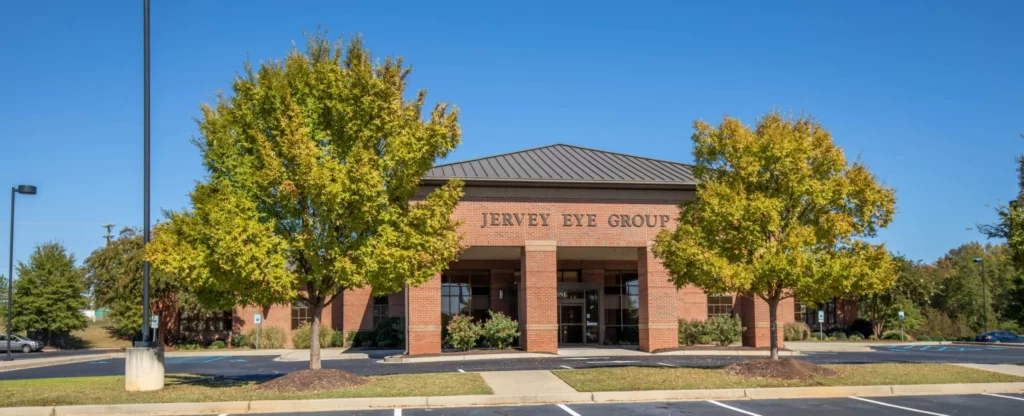HOA Management in Simpsonville, sc
William Douglas Management is a leader in customer service — the experience and expertise that your association needs and deserves!
Simpsonville offers the benefits of living in proximity to thriving Greenville
Located in Greenville County between Mauldin and Fountain Inn, Simpsonville offers the benefits of living in proximity to thriving Greenville while offering a slower pace of life.
With strong communities values at the heart of Simpsonville, William Douglas Property Management is proud of our longstanding presence in the region. If you are seeking new HOA management, please contact us today to learn how our individualized focus on your community can help you transform your vision into reality.
Simpsonville, South Carolina Facts
Simpsonville, South Carolina, or the City of Simpsonville, is located within Greenville County. Simpsonville is a suburb of the City of Greenville, South Carolina, and only 14 miles from downtown Greenville. The 2019 U.S. Census estimate for Simpsonville was 24,221. Simpsonville’s zip codes are 29680 and 29681. The area code for Simpsonville is 864.
Simpsonville was first incorporated in 1889. The original town charter stated that malt and spiritous liquors were never to be sold in the town limits. The prohibition of alcohol was to “prevent the sale of whiskey and to curb lawlessness of various forms…” However, Simpsonville, or the area that would become Simpsonville, has a history that began in the 1830s. The genesis of Simpsonville was the crossroads of the Old Stage Road and a Cherokee Indian trail. The Cherokee Indian trail eventually became the Georgia Road. Remnants of both roads are still found in Simpsonville.
The town or area was originally known as “Plain” or “Dry Ridge.” However, in 1886 the Plain post office officially became Simpsonville. The origin of “Simpsonville” came from a blacksmith by the name of Peter Simpson. Simpson arrived at the crossroads in 1838 and opened a blacksmith shop. His blacksmith enterprise was successful, and the crossroads became known as Simpsonville. The first mention of the Town of Simpsonville in newsprint occurred in The Greenville Enterprise on March 25, 1868, regarding a tax accessor planning to be there to collect taxes.
Greenville County was founded in 1786 and was reportedly named for American Revolutionary War Continental Army Major General Nathanael Greene. This was in tribute to his successful leadership of the Continental Army and the American Patriots in the south during the American Revolution.
Per the United States Census Bureau for Simpsonville (for 2010 unless otherwise noted)
Historical population for Simpsonville
Census Pop. %±
1900 195 —
1910 521 167.2%
1920 566 8.6%
1930 1,400 147.3%
1940 1,298 −7.3%
1950 1,529 17.8%
1960 2,282 49.2%
Female population: 51.3%
1970 3,308 45.0%
1980 9,037 173.2%
2000 14,352 22.6%
1990 11,708 29.6%
2019 24,221(est.) 32.8%
Male population: 48.7%
Bachelor’s degree or higher 2015-2019: 35.2%
Population under 18 years: 24.1%
Population 65 years & over: 14.4%
High school graduate or higher 2015-2019: 93.1%
Median home value 2015-2019: $173,400
Highway & Roads
Owner-occupied: 75.2%
Total households 2015-2019: 8,464
As of the 2012 U.S. Census, there were 1,890 businesses within the City of Simpsonville.
After the success of Simpson’s blacksmith enterprise, two more early Simpsonville enterprises that note mentioning. First, Thomas Goldsmith managed the stagecoach stop on Old Stage Road. The stagecoach stop was near the crossroads where Simpson had his blacksmith shop. The Old Stage Road ran from Laurens to Greenville and was the primary road in the area from around 1820 to around 1870. The second is merchant Silas Gilbert who opened a general store at the crossroads shortly after Simpson established his blacksmith shop. Gilbert soon thereafter opened a post office in his general store.
In 1853 the Greenville and Columbia Railroad laid rail several miles to the east of Simpsonville. This negatively affected Simpsonville’s development, much the same way today when a new road bypasses older established roads and businesses. This rail line reduced traffic on the Old Stage Road through Simpsonville.

In 1870, freed African American slaves formed the Cedar Grove Baptist Church. The first church was a brush-constructed arbor. This was the first church within Simpsonville’s modern-day city limits. In 1877, a church constructed of pine and popular logs was completed. Because of the growth of the congregation to 200 members, in 1938, a frame church was constructed to accommodate the larger congregation. In 1962, the frame church was bricked while going under major renovations. The Cedar Grove Baptist Church is still located on Moore Street in Simpsonville.
Simpsonville began to thrive once again with the arrival of the Greenville & Laurens Railroad (G&L RR). The G&L RR’s depot and rail lines were completed in 1886. The rail line was laid through the center of town and is still there today. The G&L RR was merged into the Port Royal & Western Carolina Railroad (PR & WC RR) in 1886. The PR & WC RR, ten years later in 1896, re-organized into the Charleston & Western Carolina Railroad (C&WC). The C&WC merged into the Atlantic Coast Line Railroad of South Carolina in 1897 and operated into the mid-20th century.
The citizens of Simpsonville were considered ahead of their time when it came to public education. So much so that in 1885, a joint-stock company was founded by town citizens to raise funds to begin the school system. The funds raised were used to construct a two-story wooden schoolhouse. Fifty by twenty feet totaling 2,000 square feet, for $500 hundred dollars, which would be $13,765 in today’s dollars. The schoolhouse had two large rooms downstairs with an auditorium upstairs. The school opened on January 6, 1886, with an enrollment of 50 students. Thus, becoming one of the first school systems in Greenville County. There were two driving forces in the initial success of the Simpsonville public school system, R.H. Willis and L.L. Richardson, MD.
In six decades of his life, Professor Robert Henry Willis (1854 – 1938) taught the children of Simpsonville and South Carolina. It was claimed he had performed more educational instruction in the state of South Carolina than any other man. He began teaching in Simpsonville in 1892 and was instrumental in establishing the foundation and curriculum of the school system. He was a school superintendent and still instructed students from 1907 until 1914. It has been said that his former pupils always did well in college because of the fundamentals gained from his instruction. It has also been said that he never had a student who applied for a college scholarship be rejected. During his teaching and educational administration positions, the most pay he ever received was $95 a month. Nevertheless, he and his wife still managed to send their seven children to college.
Dr. Lawrence Lafayette Richardson (1867 – 1958) was a long-term trustee of the Simpsonville school system. He is considered by many as the founder and driving force behind the school system’s success. In addition, he was a well-respected physician in Simpsonville who served as mayor of Simpsonville for 42 years until his death.
An article in The Greenville News about the Simpsonville public education system dated March 14, 1935, addresses school attendance. Of the 836 children in the school district, daily attendance was 93%. At the time, South Carolina statutes mandated compulsory school attendance for all children from between ages 8 and 14. The reasons discovered for children who were mandated to attend, however, were not attending school were: lack of interest, work to support family, over the age or overgrown for grade last attended, and physical and mental disabilities. While 93% attendance may not seem high enough, but during this period of economic uncertainty caused by the Great Depression, that is an amazingly high attendance level.
The economic base of the Simpsonville area was agriculture. Raising cotton was the major cash crop in the area from the mid-19th century up into the 20th century. There were three cotton gins in town to help process the cotton harvest. A cotton gin is a machine that separates cotton fibers from cotton seeds. Along with cotton cultivation, raising poultry and livestock was important to the agricultural economic base as well.
Simpsonville recruited the Woodside brothers, John and Edward, to construct a cotton mill in their city. In 1907, the Simpsonville Cotton Mill was constructed as a branch of the Greenville Woodside Cotton Mills. The mill produced print cloths, twills, and cords. By 1910, the mill employed around 500 people and had over 25,000 spindles and 600 looms. Simpsonville Cotton Mill remained the town’s largest employer into the 1950s.

At the turn of the 20th century, there was a great deal of economic growth in Simpsonville. Industrial manufacturing such as the Simpsonville Cotton Mill, a large cotton oil mill, and a woodworking plant. B.W. Burdett and Bros. Co. was Simpsonville’s first department store. The Bank of Simpsonville was founded in 1907, and deposits exceeded $68,000 by 1910.
The Great Depression of the 1930s was devastating to the citizens of Simpsonville, as it was for the rest of the nation and world. Demand for products and services declined, which resulted in people being unemployed. Agriculture, in general, was hard hit because of this decline in economic activity. As a result, a financial crisis erupted, affecting banks in rural agriculture areas first. This was the genesis of the “Bank Panic of 1930.” The Farmer’s Bank of Simpsonville was one of the few banks in Greenville County that remained open and did not fail.
As with many rural areas that depended on agriculture after the depression, Simpsonville’s agricultural economic base did not immediately recover, if ever. However, the economic base of Simpsonville and Greenville County took a turn for the better when the Greenville Water Works laid waterlines through Mauldin, Simpsonville, and Fountain Inn in 1953. This new waterline attracted industrial development all along its route and has been a major economic driver for the entire area since then.
Simpsonville’s growth in the 1950s led to increased demand for housing and the widening of U.S. Highway 276 in 1956 to accommodate this growth. This local economic growth continued through the 1970s when the economic growth of Greenville and Spartanburg began extending out from their city limits. In addition, the convenience of US Interstate 385 and housing has turned Simpsonville into a great commuter community.
Need Association Management?
Contact Us
How to Start
The Process of Working With Us


REQUEST A PROPOSAL
Request a proposal online or call us directly.


WE WILL REVIEW YOUR CASE
Our team of highly trained professionals will review your case.


RECEIVE A CUSTOM TAILORED PLAN
We will create a customized management plan for your community.


SEAMLESS TRANSITION
We will implement a seamless management transition and integrate our tech.


SIT BACK & RELAX
Enjoy better, affordable and a more reliable, hassle-free management system.




